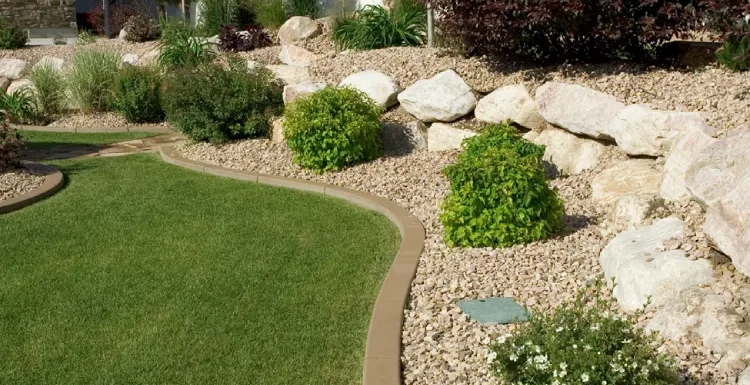
Transforming your lawn from regular grass to the vibrant and resilient Bimini Bermuda grass can be a rewarding endeavor, but it requires careful planning and execution. Bimini Bermuda grass, known for its lush green color, fine texture, and excellent heat and drought tolerance, is a popular choice for homeowners seeking a beautiful and low-maintenance lawn. However, transitioning to Bimini Bermuda grass requires more than just planting new seeds or laying sod. It involves a series of strategic steps to prepare the soil, remove existing vegetation, and establish healthy growth of Bimini Bermuda grass.
In this comprehensive guide, we’ll walk you through each stage of the transition process, providing practical tips and insights to help you achieve success. Whether you’re starting from scratch or renovating an existing lawn, this guide will equip you with the knowledge and tools needed to create a lush and vibrant Bimini Bermuda grass lawn that you can enjoy for years to come. Let’s dive in and turn your lawn into a stunning showcase of greenery with Bimini Bermuda grass.
Initial Assessment
Before embarking on the transition to Bimini Bermuda grass, it’s essential to assess your current lawn’s suitability for this Bermuda grass variety. Take note of factors such as soil type, sunlight exposure, and climate conditions. Bimini Bermuda grass thrives in full sun and well-drained soil, making it ideal for warmer climates. If your lawn receives ample sunlight and has good soil drainage, it’s likely suitable for Bimini Bermuda grass. However, if your lawn is shaded or prone to waterlogging, you may need to make adjustments or consider alternative grass options.
Soil Preparation
Preparing the soil is a critical step in ensuring the successful establishment of Bimini Bermuda grass. Start by testing the soil’s pH and nutrient levels using a soil testing kit. Bimini Bermuda grass prefers slightly acidic to neutral soil with a pH range of 6.0 to 7.0. If the soil pH is outside of this range, amend it accordingly using lime to raise pH or sulfur to lower pH. Additionally, ensure the soil is well-drained and free from compaction by aerating it if necessary. Incorporate organic matter such as compost or peat moss to improve soil structure and fertility, providing an optimal growing environment for Bimini Bermuda grass.
Removal of Existing Grass
Before planting Bimini Bermuda grass, it’s essential to remove any existing grass and weeds from the lawn area. Use a sod cutter, herbicide, or manual removal method to eliminate unwanted vegetation thoroughly. This step ensures that Bimini Bermuda grass has the best chance of establishing itself without competition from existing plants. Take care to remove the entire root system to prevent regrowth of weeds and other undesirable plants.
Seeding or Sodding
Once the soil is prepared and the existing vegetation removed, you’re ready to establish Bimini Bermuda grass in your lawn. You have two primary options for planting: seeding or sodding. Seeding is a cost-effective method that involves spreading Bimini Bermuda grass seed evenly over the prepared soil surface. Ensure good seed-to-soil contact by lightly raking the soil after seeding. Keep the soil consistently moist until the seeds germinate and the grass establishes itself. Alternatively, sodding provides instant results by laying pre-grown Bimini Bermuda grass sod directly onto the soil surface. Sodding is more expensive than seeding but offers immediate coverage and faster establishment.
Planting and Establishment
Once you’ve chosen your preferred planting method, follow specific guidelines for seeding or sodding to ensure successful establishment of Bimini Bermuda grass. For seeding, evenly distribute the grass seed over the prepared soil surface and lightly rake to cover the seeds. Keep the soil consistently moist until the seeds germinate and the grass establishes itself. If sodding, lay the Bimini Bermuda grass sod in a staggered pattern, ensuring tight seams between pieces. Water the sod thoroughly after installation to promote root establishment and ensure good contact with the soil.
Maintenance
After planting, maintaining proper care is essential to promote healthy growth and establishment of Bimini Bermuda grass. Water the newly planted grass regularly, keeping the soil consistently moist but not waterlogged. Gradually reduce watering frequency as the grass establishes itself, encouraging deep root growth and drought tolerance. Mow the grass at the recommended height of 1.5 to 2 inches to promote dense turf and discourage weed growth. Fertilize the lawn according to Bimini Bermuda grass’s specific nutrient requirements to promote healthy growth and vibrant color.
Weed and Pest Control
Monitor the lawn regularly for weeds and pests, taking prompt action to prevent infestations. Use appropriate herbicides and insecticides as needed, following label instructions carefully to avoid damage to Bimini Bermuda grass. Implement cultural practices such as proper watering, mowing, and fertilization to maintain a healthy lawn and reduce weed and pest pressure.
Transition Period
Be patient during the transition period as Bimini Bermuda grass establishes itself in your lawn. It may take several weeks to months for the grass to fully cover the area and achieve its desired density and appearance. Continue to provide proper care and maintenance during this time to support healthy growth and establishment.
Conclusion
Transitioning your lawn from regular grass to Bimini Bermuda grass requires careful planning, preparation, and maintenance, but the results are well worth the effort. By following the steps outlined in this guide, you can successfully establish a lush and resilient Bimini Bermuda grass lawn that enhances the beauty of your outdoor space.
Remember to assess your lawn’s suitability for Bimini Bermuda grass, prepare the soil, remove existing vegetation, and choose the appropriate planting method. Maintain proper care and maintenance, including watering, mowing, fertilization, and weed and pest control, to support healthy growth and establishment.
Be patient during the transition period, as it may take time for Bimini Bermuda grass to fully cover the area and achieve its desired density and appearance. With dedication and proper care, you can enjoy a vibrant and beautiful lawn that provides years of enjoyment for you and your family.
